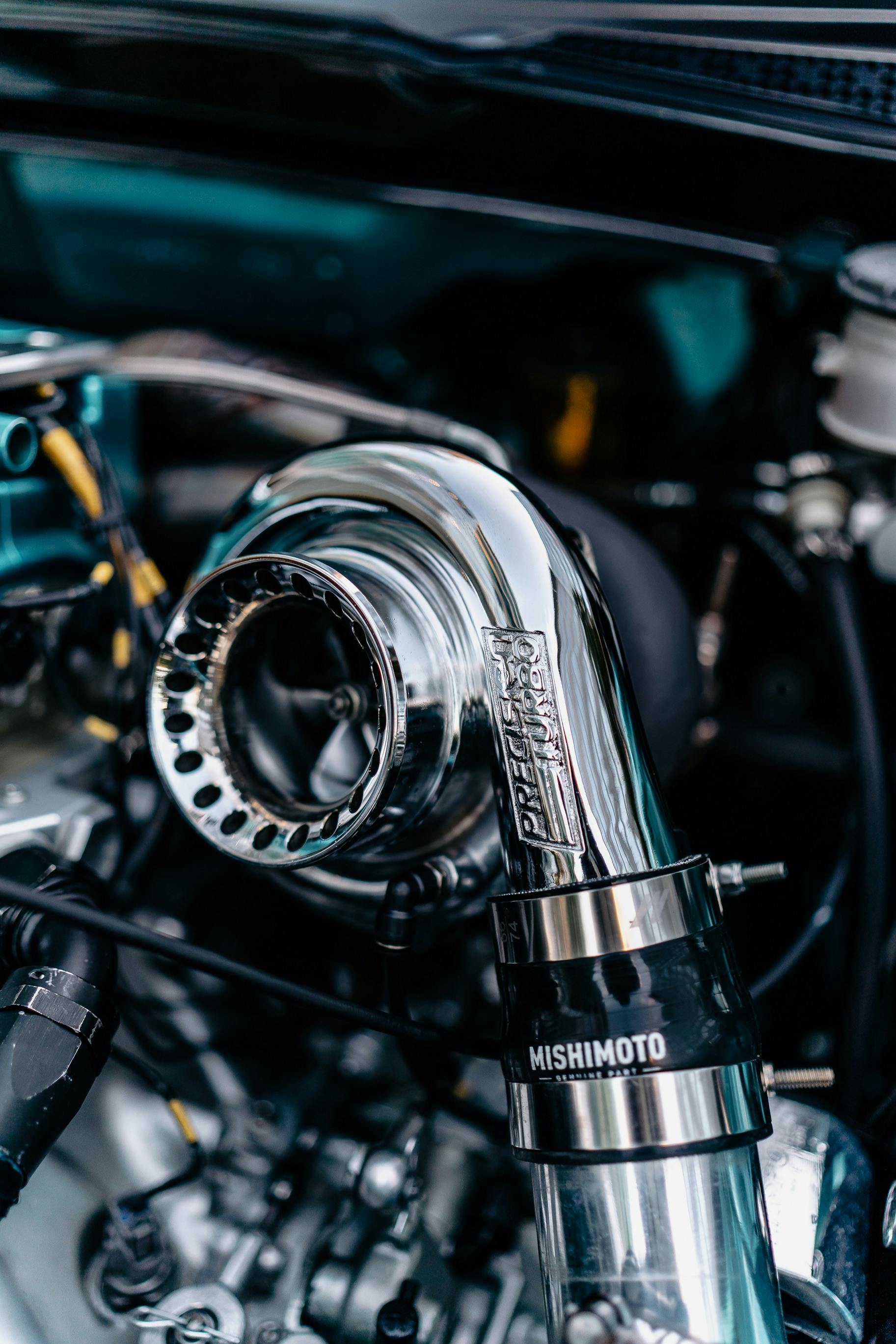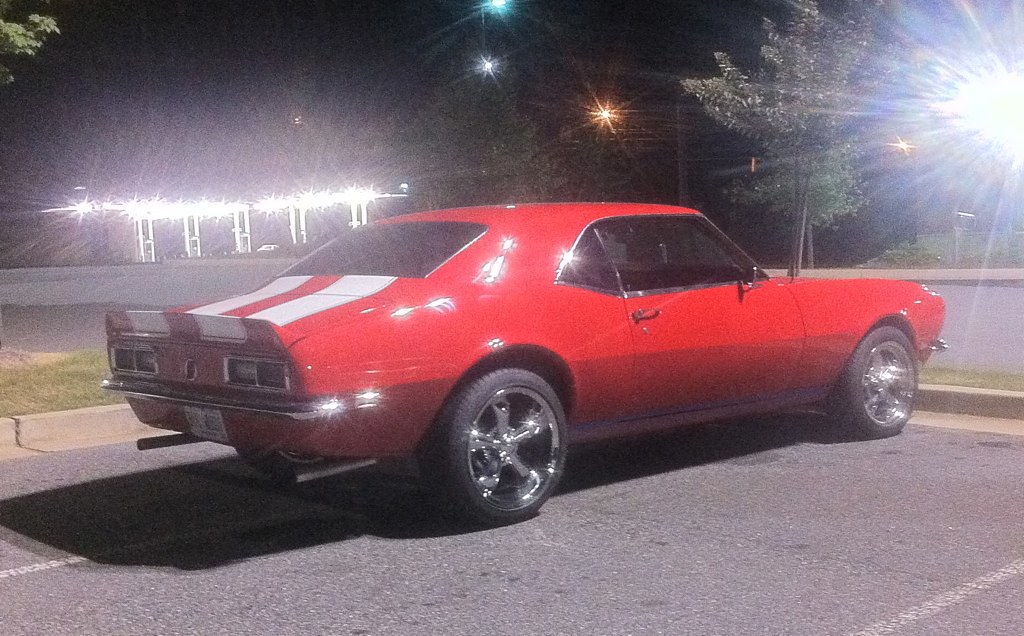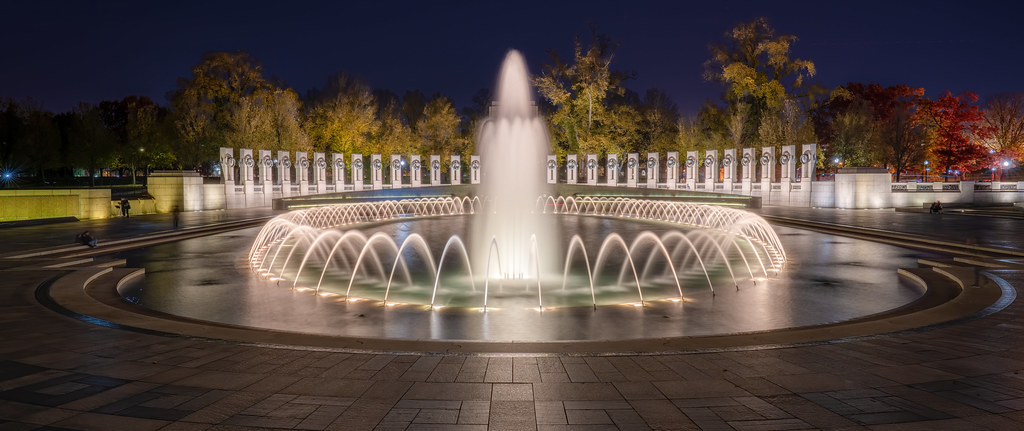
In the annals of military history, few vehicles command the iconic status, global recognition, and sheer mythological reputation of toughness and versatility as the U.S. military’s 1⁄4‑ton, 4×4 truck. Affectionately known as the “Jeep,” this unassuming workhorse emerged from the crucible of World War II to become not just a crucial piece of equipment, but a symbol of American ingenuity and resolve. It earned the profound respect of commanders like Dwight D. Eisenhower, who regarded it as “one of the six most vital” U.S. vehicles to win the war, and General George Marshall, who hailed it as “America’s greatest contribution to modern warfare.”
The story of the Jeep, however, is far more intricate than a simple wartime invention. It’s a compelling narrative of evolving military needs, technological progression, and intense competition among pioneering automotive manufacturers. Before the standardized Willys MB and Ford GPW roared across battlefields, there was a lengthy and often challenging journey, marked by early experiments, design innovations, and the gradual understanding of what a truly effective light utility vehicle required.
Join us as we take a deep dive into the fascinating pre-history and initial development of this legendary machine. We’ll explore the early attempts at military motorization, the critical lessons learned from vehicles that didn’t quite hit the mark, and the intense, compressed timeline that saw the birth of the original concept for the vehicle that would fundamentally change warfare and inspire an entire industry. Prepare to discover the untold efforts and brilliant minds behind the “sardine tin on wheels” that captured the world’s imagination.
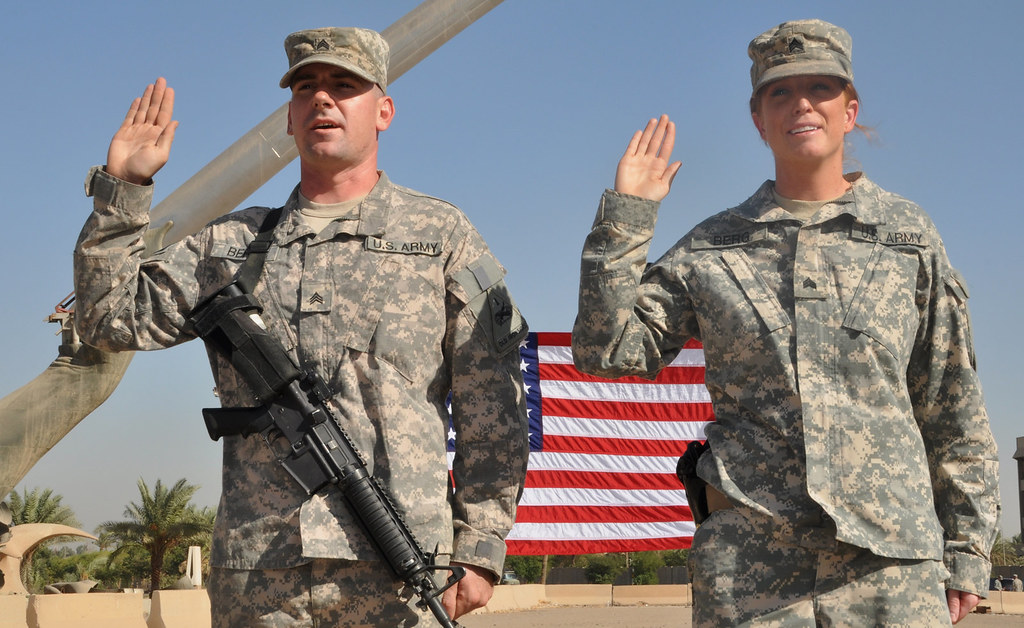
1. **Early Military Motorization: Motorcycles in WWI**For centuries, armed conflicts relied heavily on horses for reconnaissance, communications, and logistical support. However, with the dawn of the 20th century, a new breed of motorized vehicle began to make its mark on the battlefield: the motorcycle. These nimble machines were eagerly adopted by the military in World War I, marking a significant shift in how cavalry and infantry could be mobilized.
Motorcycles rapidly proved their worth, replacing mounted cavalry horses and motorizing infantry units with unprecedented speed and agility. They became indispensable for tasks such as dispatching critical orders, getting munitions to machine guns, and scouting miles ahead of advancing units. The sight of a U.S. Indian motorcycle, perhaps with an M1914 Colt Machine Gun attached, or a British military dispatch rider navigating the chaos of 1914, underscored their irreplaceable role.
These early motorbikes offered armies the ability to mobilize scouts, messengers, and even mounted infantry with newfound speed, agility, and tireless machine endurance. They were seen as essential for relaying vital information and ensuring the continuous flow of supplies and intelligence on a rapidly changing battlefield. The quick and nimble motorcycle, “ridden hard through shot and shell to secure victory,” carved out its niche, a role that, in certain specialized capacities, continues to this day.
Military equipment: Glossary of German military terms
Categories: Articles with short description, CS1 German-language sources (de), German military-related lists, German words and phrases, Glossaries of the military
Summary: This is a list of words, terms, concepts, and slogans that have been or are used by the German military. Ranks and translations of nicknames for vehicles are included. Also included are some general terms from the German language found frequently in military jargon. Some terms are from the general German cultural background, others are given to show a change that was made before or after the Nazi era. Some factories that were the primary producers of military equipment, especially tanks, are also given.
Get more information about: Glossary of German military terms
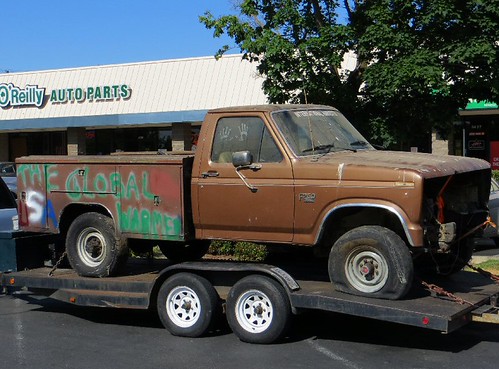
2. **The Limitations of Motorcycles and Early Trucks: Paving the Way for 4x4s**Despite their initial promise, motorcycles had severe limitations that quickly became apparent in the rugged realities of wartime. While fast on a decent road, many roads were still so poor that the U.S. had initiated a “Good Roads Movement” in the late 19th century to improve surfaces. The motorcycles of the era struggled with challenging terrain; only the most skilled riders could truly endure a muddy battlefield trail without stalling, damaging the bike, or flipping over.
Furthermore, driver training was costly and time-consuming, and their off-roading ability was generally poor. Crucially, they lacked significant payload capacity, which severely limited their utility beyond individual transport or light messaging. Adding a sidecar provided more stability and minimal cargo space, but with only one powered wheel out of three, the combination frequently got stuck, highlighting the need for more robust, all-terrain solutions.
Concurrently, the growing use of automobiles led to pioneering cross-country vehicle trips, influencing military thinking. The U.S. Army purchased its first truck in 1907, a 5-ton capacity model. Experimental treks, like the 1913 Alaska expedition with a 3⁄4-ton field-truck, tested vehicles’ bad-road supply and maintenance abilities. By 1916, the Quartermaster Corps serviced over 100 “motor trucks” of 27 “varieties.” The Pancho Villa Expedition in Mexico that year showcased the advantages of 4x4s, with Jeffery off-road Quad trucks proving more capable than rear-wheel drive White trucks. Britain, France, and Russia also recognized this, buying American-made four-wheel-drive trucks like the Four Wheel Drive Auto Company and Jeffery/Nash Quads because “on the muddy roads and European battlefields, they would not get stuck all the time.” Despite General Pershing’s enthusiasm for motorcycles in the Mexican Border War, the overarching lesson from WWI was clear: while horses were “hopelessly outclassed,” the crucial gap remained for a *light* four-wheel-drive vehicle, as all existing 4x4s were still heavy, 1 1⁄2-ton to 5-ton trucks.
Military equipment: HH-60G PAVE Hawk
Manufacturer: Sikorsky
Categories: Air Force Aircraft, Air Force Equipment, Air Force Helicopters, Helicopters, Military Aircraft
Get more information about: HH-60G PAVE Hawk

3. **Interwar Experiments: The Quest for a Light Reconnaissance Vehicle**Immediately following World War I, the U.S. Army Quartermaster Corps recognized a profound need for a new kind of military vehicle. In 1919, they recommended the acquisition of a “light weight and compact size, with a low silhouette and high ground clearance, and possess the ability to carry weapons and men over all sorts of rough terrain.” The Army sought a small vehicle for reconnaissance and messaging, alongside a light cross-country weapons carrier.
However, the interwar period presented immense challenges. A significant public debt from WWI, coupled with a surplus of war vehicles, led to drastic cuts in vehicle budgets. The “Roaring Twenties,” despite its booming economy, saw U.S. policies of non-interventionism and isolationism prevail, meaning no real budgets were allocated for new military vehicle development. The Wall Street crash of 1929 and the Great Depression further intensified economic austerity, effectively curtailing any progress on a light 4WD car until the late 1930s.
Despite these financial constraints, the drive for standardization was a constant concern. By the end of WWI, U.S. forces overseas operated an astounding 216 different makes and models of motor vehicles, creating an unmanageable logistical nightmare for supply and maintenance. Early experiments included motorcycles, sidecars, and modified Ford Model Ts, but the Army desperately needed a very light, small, user-friendly battlefield utility vehicle that could effectively replace motorcycles while offering superior performance and cargo capacity. In 1933, a “bantam-weight ‘midget truck'” from American Austin Car Company, weighing just 1,050 lb, even appeared in Popular Mechanics, light enough to be lifted by four soldiers – but it was still only rear-wheel drive, illustrating the persistent gap in capability.
After 1935, when WWI vehicles were officially declared obsolete, “remotorization of the Army” gained momentum. Yet, pre-war peacetime budget restrictions continued to force the Army into open bidding, awarding contracts to the lowest bidder. This “penny wise, pound foolish” approach led to a problematic diversity in the fleet, with “360 different models of vehicles” requiring “nearly a million items of spare parts” by 1935. This logistical chaos severely hindered wartime readiness, emphasizing the urgent need for a standardized, light, and capable 4×4 design. Meanwhile, other nations, like Japan with its 1935 Kurogane Type 95 4×4 scout car, were already fielding dedicated light military vehicles, underscoring America’s catch-up challenge.
Military equipment: Unmanned aerial vehicle
Categories: All Wikipedia articles written in American English, All articles containing potentially dated statements, All articles with dead external links, All articles with incomplete citations, All articles with unsourced statements
Summary: An unmanned aerial vehicle (UAV) or unmanned aircraft system (UAS), commonly known as a drone, is an aircraft with no human pilot, crew, or passengers on board, but rather is controlled remotely or is autonomous. UAVs were originally developed through the twentieth century for military missions too “dull, dirty or dangerous” for humans, and by the twenty-first, they had become essential assets to most militaries. As control technologies improved and costs fell, their use expanded to many non-military applications. These include aerial photography, area coverage, precision agriculture, forest fire monitoring, river monitoring, environmental monitoring, weather observation, policing and surveillance, infrastructure inspections, smuggling, product deliveries, entertainment and drone racing.
Get more information about: Unmanned aerial vehicle
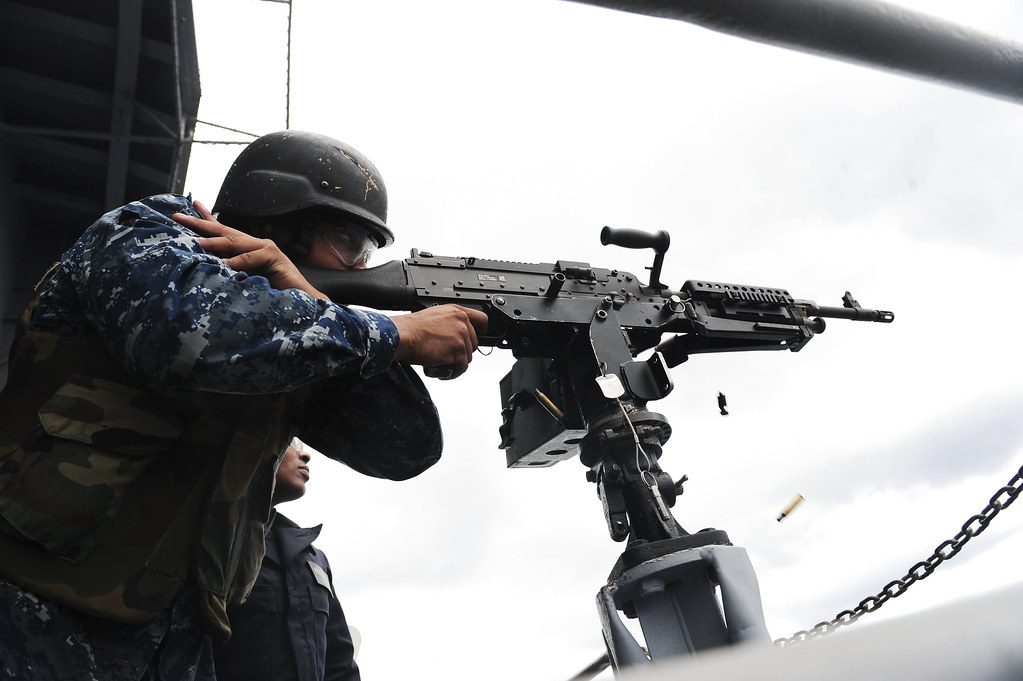
4. **The Howie-Wiley Machine Gun Carrier: A Unique “Belly Flopper”**Amidst the interwar period’s budget constraints and varied experiments, some truly unique concepts emerged, showcasing the innovative spirit of military engineers. One such example was the Howie-Wiley machine gun carrier. This experimental light, low-profile scout and gun mover was a brainchild of Captain Robert G. Howie and Master Sergeant Melvin C. Wiley, ordered by General Walter Short, then Assistant Commander of the Army’s Infantry School at Fort Benning, Georgia.
Completed in April 1937, this distinctive vehicle was specifically designed for infantry support. It featured a very low profile, requiring both the driver and a gunner to operate it from a prone position, earning it the memorable nickname “belly flopper.” Equipped with a .30 caliber machine gun, it represented an early and determined effort to create a specialized, compact battlefield vehicle capable of rapid deployment and effective fire support in challenging terrain.
The “belly flopper” demonstrated the Army’s growing interest in small, specialized vehicles for specific battlefield roles. While it may not have evolved into a mass-produced solution, it provided invaluable insights into the operational requirements for low-profile reconnaissance and direct infantry support. Its existence underscored the creative problem-solving happening within the military, even during times of limited resources, as they sought practical ways to enhance mobility and firepower for the foot soldier.
Military equipment: Willys MB
Name: Willys MB , Ford GPW , Truck, 1⁄4nbhton, 4×4, command reconnaissance
Origin: United States
Type: 1/4 ton 4×4 utility truck
IsVehicle: true
Service: 1941–2000
UsedBy: allies of World War II
Wars: World War II,Korean War,List of wars: 1945–1989
Designer: Harold Crist
DesignDate: 1940 through early 1942
Manufacturer: Willys,Ford Motor Company
ProductionDate: 1941–1945
Number: WWII total: More than 647,925 *,,including early production units,Willys MB: Over 359,489 *,Ford GPW: Over 277,896 *,Auburn Automobile#Corporate history
Variants: Ford GPA
SpecLabel: MB and GPW same
Weight: convert
Length: 132 in
Abbr: refn
Width: 62 in
Height: 52 in
Crew: 3 to 4
PrimaryArmament: Designed to mount .30 or .50 caliber machine guns swiveling on a post between front seatbacks
Engine: 134 cuin
EnginePower: 60 hp
PwRatio: 49 hp
Transmission: 3-speed × 2-range transfer case
Suspension: Beam axle#Live axle vs Dead axle
Clearance: convert
PayloadCapacity: 1200 lb
FuelCapacity: 15 USgal
VehicleRange: 300 mi
Speed: 65 mph
Categories: All articles needing additional references, All articles with failed verification, All articles with unsourced statements, Articles needing additional references from September 2021, Articles with failed verification from September 2021
Summary: The Willys MB ( Willis) and the Ford GPW, both formally called the U.S. Army truck, 1⁄4‑ton, 4×4, command reconnaissance, commonly known as the Willys Jeep, Jeep, or jeep, and sometimes referred to by its Standard Army vehicle supply number G-503, were highly successful American off-road capable, light military utility vehicles. Well over 600,000 were built to a single standardized design, for the United States and the Allied forces in World War II, from 1941 until 1945. This also made it the world’s first mass-produced four-wheel-drive car, built in six-figure numbers.
The 1⁄4-ton jeep became the primary light, wheeled, multi-role vehicle of the United States military and its allies. With some 640,000 units built, the 1⁄4‑ton jeeps constituted a quarter of the total military support motor vehicles that the U.S. produced during the war, and almost two-thirds of the 988,000 light 4WD vehicles produced, when counted together with the Dodge WC series. Large numbers of jeeps were provided to U.S. allies, including the Soviet Union at the time. Aside from large amounts of 11⁄2- and 21⁄2‑ton trucks, and 25,000 3⁄4‑ton Dodges, some 50,000 1⁄4‑ton jeeps were shipped to help Russia during WWII, against Nazi Germany’s total production of just over 50,000 Kübelwagens, the jeep’s primary counterpart.
Historian Charles K. Hyde wrote: “In many respects, the jeep became the iconic vehicle of World War II, with an almost mythological reputation of toughness, durability, and versatility.” It became the workhorse of the American military, replacing horses, other draft animals, and motorcycles in every role, from messaging and cavalry units to supply trains. In addition, improvised field modifications made the jeep capable of just about any other function soldiers could think of. Military jeeps were adopted by countries all over the world, so much so that they became the most widely used and recognizable military vehicle in history.
Dwight D. Eisenhower, the Supreme Commander of the Allied Expeditionary Force in Europe in World War II, wrote in his memoirs that most senior officers regarded it as one of the five pieces of equipment most vital to success in Africa and Europe. General George Marshall, Chief of Staff of the US Army during the war, called the vehicle “America’s greatest contribution to modern warfare.” In 1991, the MB Jeep was designated an “International Historic Mechanical Engineering Landmark” by the American Society of Mechanical Engineers.
After WWII, the original jeep continued to serve, in the Korean War and other conflicts, until it was updated in the form of the M38 Willys MC and M38A1 Willys MD (in 1949 and 1952 respectively), and received a complete redesign by Ford in the form of the 1960-introduced M151 jeep. Its influence, however, was much greater than that—manufacturers worldwide began building jeeps and similar designs, either under license or not—at first primarily for military purposes, but later also for the civilian market. Willys turned the MB into the civilian Jeep CJ-2A in 1945, making the world’s first mass-produced civilian four-wheel drive. The “Jeep” name was trademarked and grew into a successful and highly valued brand.
The success of the jeep inspired both an entire category of recreational 4WDs and SUVs, making “four-wheel drive” a household term, and numerous incarnations of military light utility vehicles. In 2010, the American Enterprise Institute called the jeep “one of the most influential designs in automotive history.” Its “sardine tin on wheels” silhouette and slotted grille made it instantly recognizable, and it has evolved into the currently produced Jeep Wrangler still largely resembling the original jeep design.
Get more information about: Willys MB

5. **The Dodge G-505 VC-series: America’s First Production 4x4s**By 1939, as global tensions escalated, the U.S. Army began a crucial step towards modernizing its fleet by standardizing general-purpose truck chassis types based on payload ratings. Initially, this involved five classes, from 1⁄2‑ton to 7+1⁄2‑ton. The Quartermaster Corps recognized that cross-country capabilities, such as increased ground clearance and multi-axle drive, had to be integrated from the factory, not merely added as afterthoughts to commercial trucks.
This push for standardization culminated in a pivotal moment in 1940, with the procurement of America’s first-ever production quantity of light, 1⁄2‑ton, 4×4 tactical trucks: the Dodge G-505 VC-series. Nearly 5,000 units arrived by the spring of 1940, marking a significant departure from previous procurement policies that largely relied on a few third-party modified 4x4s. These Dodges, often nicknamed “jeeps” by soldiers, were a critical step forward in military motorization.
The Dodge G-505 VC-series proved to be so well received that an astounding 80,000 additional units were ordered for the 1941 model year. However, despite their success and the benefits of their four-wheel-drive capability, they were still found to be “nowhere near small, light and nimble enough for the jobs that both the Infantry and Ordnance branches required it for.” This realization, ironically prompted by the success of these heavier 4x4s, directly led to a revision of the Army’s tactical truck payload categories in June 1940, formally introducing, for the very first time, the crucial quarter-ton 4×4 truck chassis class—the category that the legendary Jeep would ultimately fill.
Military equipment: Dodge WC series
Name: Dodge WC series
Caption: [object Object]
Type: 1/2-ton and 3/4-ton light 4×4 trucks in many variants, see article;,11/2-ton medium 6×6 cargo, troops & weapons carriers;,1/2-ton, 3/4-ton and 11/2-ton, 4×2 and 4×4 related truck models
Origin: Warren Truck Assembly
IsVehicle: true
Wars: World War II,Korean War,List of wars: 1945–1989
Manufacturer: Lynch Road Assembly,Hamtramck, MI
ProductionDate: 1940–1945
Number: 1/2}}-ton 4×2 models,1,542 units,All 4×4 Models,~337,600 units – across:,~82,390 {{1/2}}-ton units (1940–1942) {{sfnp,refn
Variants: undefined
SpecLabel: WC-51 / WC-52
Weight: convert
Length: convert
Width: convert
Height: convert
Engine: Dodge T-214
EnginePower: 92 hp
Abbr: on
Transmission: 4 speed × 1 range
PayloadCapacity: 1500 lb
Suspension: Live beam axles on leaf springs
Clearance: convert
FuelCapacity: 30 USgal
VehicleRange: 240 mi
Speed: 55 mph
Categories: All articles needing additional references, All articles to be expanded, All articles with dead external links, All articles with self-published sources, Articles needing additional references from January 2021
Summary: The Dodge WC series, nicknamed “Beeps”, and at first (from 1940–1942), nicknamed jeeps,) is a prolific range of light 4WD and medium 6WD military utility trucks, produced by Chrysler under the Dodge and Fargo marques during World War II. Together with the later 1⁄4‑ton jeeps produced by Willys and Ford, the Dodge 1⁄2‑ton G-505 and 3⁄4‑ton G-502 trucks made up nearly all of the light 4WD trucks supplied to the U.S. military in WW II – with Dodge contributing some 337,500 4WD units (over half as many as the 1⁄4‑ton jeeps).
Contrary to the versatility of the highly standardized 1⁄4‑ton jeeps, which was mostly achieved through field modification, the Dodge WC‑series came in many different, purpose-built, but mechanically uniform variants from the factory, much akin to the later family of High Mobility Multipurpose Wheeled Vehicles. The WC series evolved out of, and was part of a more extended family of trucks, with great mechanical parts commonality, that included open- and closed-cab cargo, troops and weapons carriers, (radio) command, and reconnaissance cars, ambulances, carry-alls, panel vans, and mobile telephone installation and (emergency) field workshop trucks.
The Dodge WC series were essentially built in two generations. From 1940 to early 1942, almost 82,400 of the 1⁄2‑ton 4×4 Dodge trucks were built. Initially called the VC series (for 1940), these were the U.S. military’s first ever “light” four-wheel drive, (pre)-production trucks, preceding the momentous 1940 rethink, leading to the creation of the “1⁄4-ton truck”. However, the great majority, from the 1941 model year, were named WC series, and built in more variants. Contrary to what Dodge’s nomenclature maybe suggested, the 1941 WC models were a straight evolution of the 1940 VC models, retaining their G-505 U.S. Army Ordnance Corps’ Supply Catalog number.
For 1942, the trucks bodies and chassis were largely redesigned – heavier frames and drivetrains uprated them to carry 3⁄4‑tons off-road. And widening their tracks, while greatly shortening the wheelbase on the main models, plus lowering the bodies’ center of gravity, gave them a much more square stance, with a much better break-over angle and side-slope stability. The trucks thus became the shorter G-502, 3⁄4‑ton, 4×4 truck (Dodge), and from 1943 also the longer, stretched G-507, 11⁄2‑ton, 6×6 personnel and cargo truck (Dodge) — all while retaining Dodge WC model codes. Although the 3⁄4‑tons improvements meant substantial design changes, they did retain some 80% interchangeable components and service parts with the 1⁄2‑ton models — a vital Army requirement, for field maintenance and operability of the trucks.
Dodge was the U.S. Army’s main supplier of 1⁄2‑ton trucks, and its sole supplier of both 3⁄4‑ton trucks and 11⁄2‑ton 6×6 trucks in World War II. With over a quarter million units built through August 1945, the G-502 3⁄4‑tons were the most common variants in the WC‑series.
After the war, Dodge developed the 3⁄4-ton WC‑series into the civilian 4×4 Dodge Power Wagon; and in 1951, the WCs were replaced by the very similar 3⁄4‑ton 4×4 Dodge M-series vehicles .
Though the majority of Dodges built were ‘Weapons Carriers’, “WC” was not abbreviated from this, but a regular Dodge model code – initially “W” for 1941, and “C” for a nominal half-ton payload rating. However, the “WC” model code was simply retained after 1941 — for both the 3⁄4-ton, as well as the 11⁄2‑ton rated 6×6 Dodges.
All in all, not counting mechanically related variants, the WC series alone involved 52 model versions (thirty 1⁄2‑ton 4×4, eight 1⁄2‑ton 4×2, twelve 3⁄4‑ton 4×4, and two 11⁄2‑ton 6×6 models). Creating vehicles of a common platform in such a variety of designs, with payloads ranging from 1⁄2‑ton to 11⁄2‑tons, had no equal in its time, and is seen as an extraordinary feat of the WWII American auto industry.
Get more information about: Dodge WC series
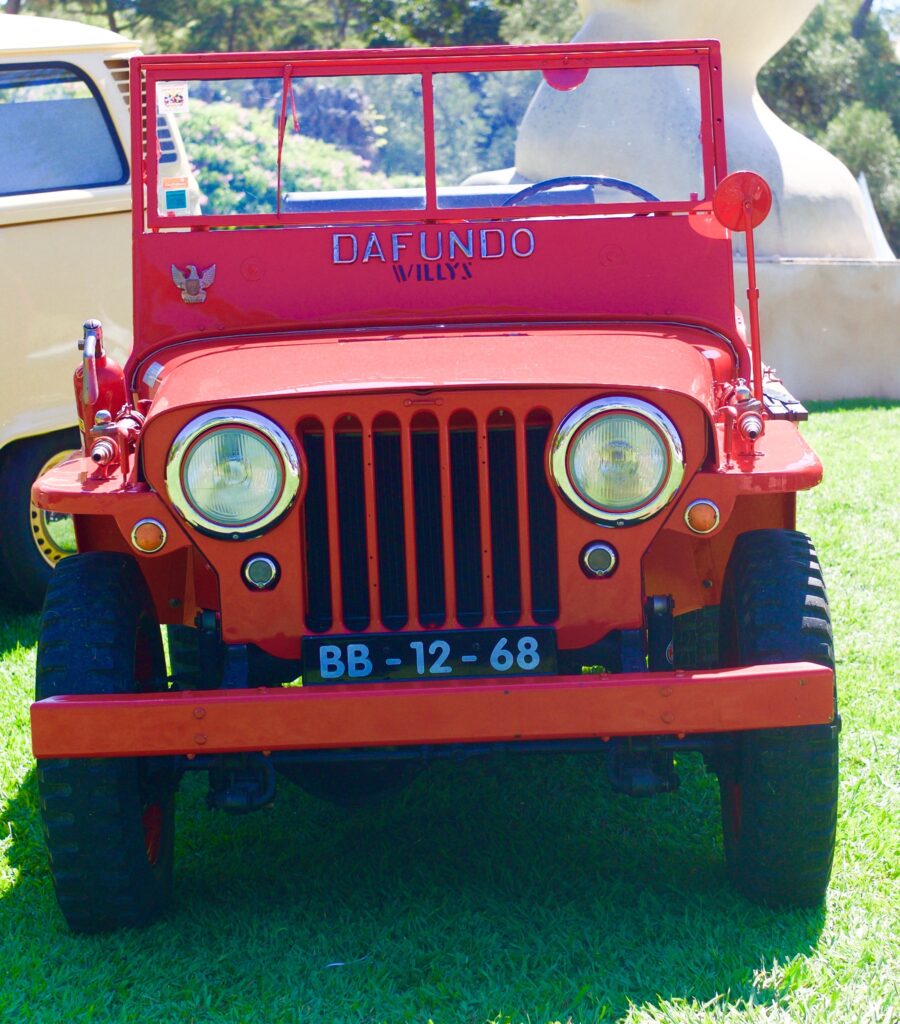
6. **The Bantam Reconnaissance Car (BRC): The Original Concept**The genesis of the true quarter-ton military vehicle can be traced back to the American Bantam Car Company. Through its persistent lobbyist, Harry Payne, Bantam had been approaching various U.S. Army branches since 1933, advocating for a small, lightweight reconnaissance car. Their earlier American Austin models, though licensed, showed promise, and by 1938, improved cars loaned to the Pennsylvania National Guard were praised as “reliable, economical and practical.”
The escalating global tensions and the advent of Nazi Germany’s “Blitzkrieg” tactics dramatically underscored the urgent need for highly mobile forces. In response, President Franklin Roosevelt’s emergency proclamation in September 1939 authorized an increase in Army size and motor transport spending. This pressing need led to a pivotal moment in June 1940 when the Ordnance Corps initiated a Technical Committee to define precise specifications for a new, very lightweight, cross-country tactical vehicle, capable of carrying personnel and equipment across rough terrain. Key experts, including Major Robert Howie, renowned for his ultra-light prototype, and civilian engineers from Camp Holabird and Bantam, were instrumental in this collaborative effort.
A crucial step involved an Army delegation visiting American Bantam’s factory in Butler, Pennsylvania, where Bantam’s chief engineer, Harold Crist, and Camp Holabird’s civilian engineer, Robert Brown, collaborated on the new vehicle’s specifications. By the end of June 1940, the Quartermaster Corps issued stringent initial requirements. These mandated a part-time four-wheel-drive vehicle with a two-speed transfer case, three bucket seats, a fold-down windshield, and blackout lights. Crucially, it had to weigh just 1,200 lb with a 600 lb payload, have a wheelbase no longer than 75 inches, a maximum collapsible height of 36 inches, and an engine capable of speeds ranging from 3–50 mph. The body design was specified as rectangular, with a sketch included.
The Army’s urgency was palpable, with bids solicited from 135 manufacturers in July 1940, allowing only eleven days to respond. The winning contractor faced an incredibly tight timeline: seven weeks (49 days) to deliver a fully functional prototype, and 75 days for 70 test vehicles. The specifications were daunting: a 4×4, three-crew vehicle on a wheelbase initially 75 inches (later 80 inches), tracks no wider than 47 inches, a folded height of 40 inches, a 660 lb payload, and an engine delivering 85 lb⋅ft of torque. The most challenging requirement remained an empty weight limit of no more than 1,275–1,300 lb. Initially, only American Bantam Car Company and Willys-Overland entered the competition, with Bantam being the sole company to provide a proper set of technical drawings, ultimately securing the contract due to its commitment to meet the aggressive deadlines.
Bantam’s chief engineer, Harold Crist, partnered with freelance designer Karl Probst. Probst, initially reluctant, agreed to work without pay after an Army request and miraculously laid out full design drawings for the Bantam Reconnaissance Car (BRC Pilot) in just two days, completing a cost estimate the following day. Bantam’s bid, complete with blueprints, met the 22 July deadline. While Bantam initially attempted to leverage its commercial off-the-shelf components, Crist soon realized that the new vehicle would necessitate a largely new design. They rapidly sourced appropriate components, including a 112 cu in Continental four-cylinder engine (45 horsepower, 86 lb⋅ft torque), a Warner Gear transmission, and custom-built Spicer transfer case and axles (modified Studebaker Champion rear axles). The hand-built prototype, affectionately called the “Blitz Buggy,” was driven by Crist and Probst to the Army vehicle test center at Camp Holabird, Maryland, arriving at 4:30 pm on September 23, 1940 – just thirty minutes before the deadline. This vehicle, though largely untested, began the intensive evaluation that would shape the future of military transport, becoming the “Old Number One,” which, with its fully rounded front fenders, evolved into the subsequent 70 Bantam Mk-II prototypes, or ‘BRC-60’, adopting a round hood and grille but featuring square front fenders with short side steps, exemplified by vehicle #7, nicknamed “Gramps,” now preserved at the Smithsonian museum.
Military equipment: American Bantam
Name: American Bantam
LogoSize: 150px
Fate: Acquired
Foundation: August 1935
Defunct: 1956
Location: Butler, Pennsylvania
Industry: Automobile,Arms Industry
Founder: Roy Evans
KeyPeople: Unbulleted_list
Products: Vehicles,List of U.S. military jeeps
NumEmployees: 916
Categories: 1936 establishments in Pennsylvania, Articles with short description, Commons category link is locally defined, Defunct motor vehicle manufacturers of the United States, Motor vehicle manufacturers based in Pennsylvania
Summary: The American Bantam Car Company was an American automobile manufacturing company incorporated in the state of Pennsylvania. American Bantam is credited with inventing the original World War II 1⁄4‑ton jeep in 1940. The company’s founders, Roy Evans and William A. Ward Jr., combined resources to purchase the assets of the bankrupt American Austin Car Company in August of 1935 during liquidation.
In 1935 the new company produced vehicles based on the American Austin tooling, operating as Evans Operations Inc. The new company was incorporated as American Bantam Car Company in June 1936. The new company launched a public fundraising campaign and redesigned their entire vehicle line to launch a completely refreshed selection of American Bantam roadsters and delivery vans in 1937. The company continued to make vehicles into 1943, until all of its production – like all the U.S. automotive industry – served the World War II efforts, with vehicles and weapons manufacturing, including (amphibious) cargo trailers, aircraft controls and other parts, and engines and tail gearing for torpedoes.
Get more information about: American Bantam
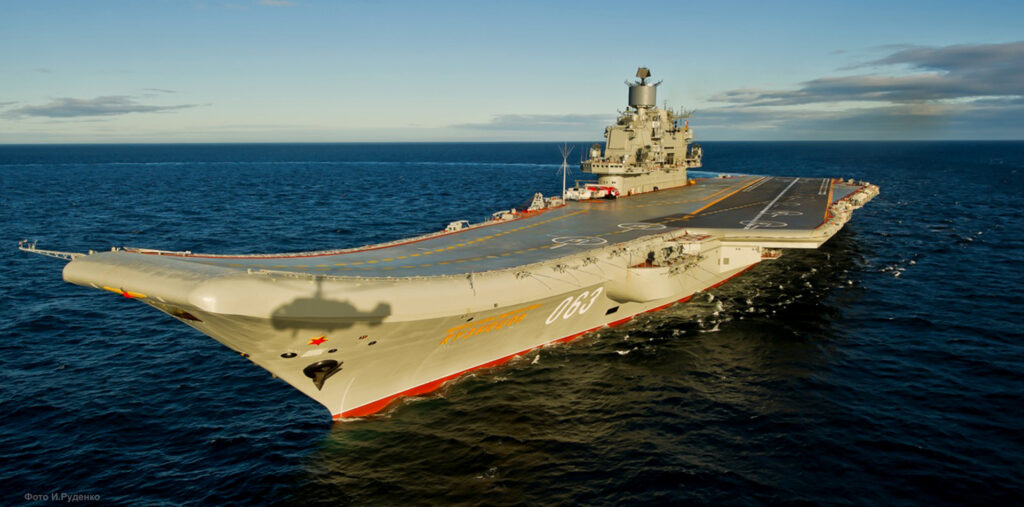
7. **The Trio Emerges: Willys, Ford, and the “Design by Committee” Challenge**As American Bantam’s innovative “Blitz Buggy” prototype began its intensive evaluation at Camp Holabird, a new chapter in the Jeep’s story was unfolding. Despite Bantam’s triumph in meeting the aggressive 49-day deadline for their prototype, the War Department harbored concerns about the company’s limited production capacity and financial resources. The sheer scale of wartime demand meant that relying on a single, small manufacturer, no matter how ingenious, was simply not feasible.
To mitigate this risk and ensure robust supply, the Army extended invitations to the other prominent automotive manufacturers that had shown interest: Willys-Overland and Ford. These industry giants were encouraged to develop their own pilot models for testing, thus transforming the competition into a multi-company endeavor. This phase was critical, as the ultimate contract for the new reconnaissance car would hinge on the rigorous trials and comparative performance of these diverse prototypes.
Willys-Overland responded with their “Quad” prototype, while Ford developed its “Pygmy” and “GP” models. Technical representatives from both companies were given ample opportunity to closely observe Bantam’s vehicle during its tests at Camp Holabird, studying its performance characteristics and innovative features firsthand. This transparent, albeit competitive, environment set the stage for a truly collaborative and iterative design process.
The urgency of impending war meant no time for independent, isolated development. To expedite the creation of Ford and Willys’ prototypes, the War Department even provided them with Bantam’s detailed blueprints. This unusual step underscored the Army’s commitment to swiftly arriving at the best possible design, leveraging the collective expertise of military engineers and commercial manufacturers in what became famously known as a “design by committee.”
Military equipment: Gerald R. Ford Class Aircraft Carrier
Manufacturer: Huntington Ingalls Industries Newport News Shipbuilding
Service: USN
Armament: Evolved Sea Sparrow Missile, Rolling Airframe Missile, CIWS
Propulsion: Two nuclear reactors, four shafts.
Speed: 30+ knots
Crew: 4,539 (ship, air wing and staff).
Aircraft: 75
Categories: Ships and Submarines, Carriers, Navy Ships and Submarines, Navy Equipment
Get more information about: Gerald R. Ford Class Aircraft Carrier
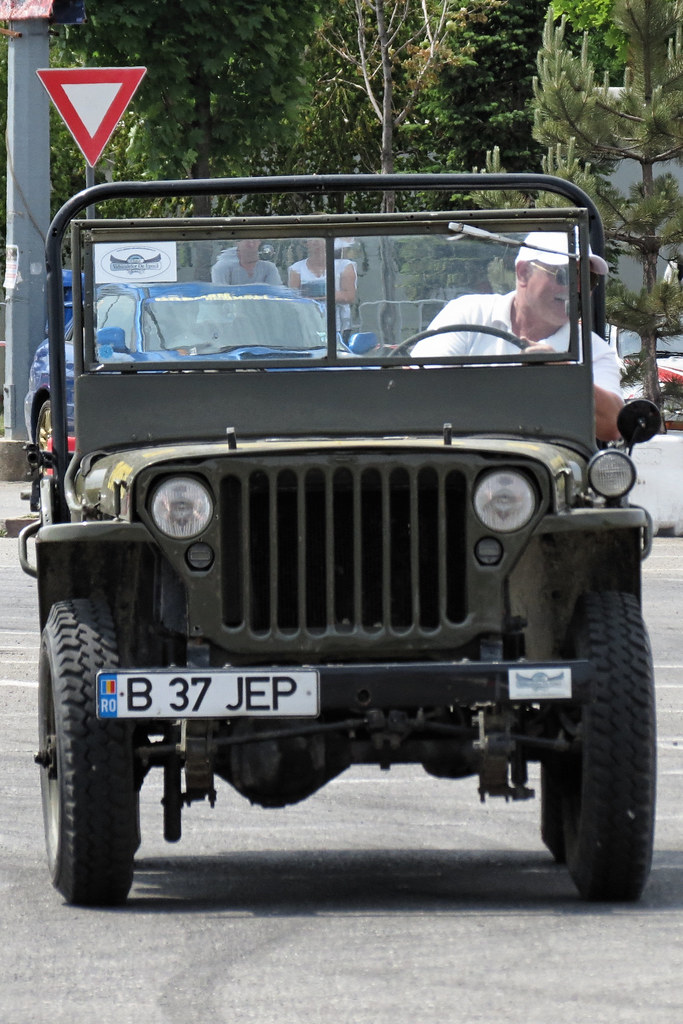
8. **The Road to Standardization: Crafting the Quarter-Ton Standard**The evaluation process for the Bantam, Willys, and Ford prototypes at Camp Holabird was thorough and exhaustive, pushing each vehicle to its limits across diverse terrains and demanding scenarios. Engineers meticulously assessed everything from engine performance and off-road capability to durability and ease of maintenance. The goal was to identify a design that not only met the stringent technical specifications but could also be mass-produced efficiently and reliably to support a global war effort.
This period of intense scrutiny and comparison highlighted the strengths and weaknesses of each design. While Bantam had laid the groundwork, Willys and Ford brought their own engineering prowess and manufacturing experience to the table. The Army, recognizing the critical need for logistical simplicity and interchangeable parts on the battlefield, made a pivotal decision: the final quarter-ton truck would be a standardized design, combining the best features and engineering solutions from all three contenders.
Ultimately, Willys-Overland was awarded the initial large-scale production contract. Their “Go-Devil” engine, a more powerful and compact unit, proved to be a decisive factor, offering a superior power-to-weight ratio that appealed to the Army’s performance requirements. This engine, combined with Willys’ strong bid, secured their position as the primary manufacturer for what would become the iconic Willys MB.
However, the sheer demand for these vehicles far outstripped Willys’ production capacity. To meet the unprecedented need, Ford Motor Company was brought in to produce the standardized design under license, designating their version the Ford GPW. This collaborative effort ensured that hundreds of thousands of these vital vehicles could be supplied to Allied forces, demonstrating an extraordinary synergy between competing companies united by a national imperative.
Military equipment: Willys MB
Name: Willys MB , Ford GPW , Truck, 1⁄4nbhton, 4×4, command reconnaissance
Origin: United States
Type: 1/4 ton 4×4 utility truck
IsVehicle: true
Service: 1941–2000
UsedBy: allies of World War II
Wars: World War II,Korean War,List of wars: 1945–1989
Designer: Harold Crist
DesignDate: 1940 through early 1942
Manufacturer: Willys,Ford Motor Company
ProductionDate: 1941–1945
Number: WWII total: More than 647,925 *,,including early production units,Willys MB: Over 359,489 *,Ford GPW: Over 277,896 *,Auburn Automobile#Corporate history
Variants: Ford GPA
SpecLabel: MB and GPW same
Weight: convert
Length: 132 in
Abbr: refn
Width: 62 in
Height: 52 in
Crew: 3 to 4
PrimaryArmament: Designed to mount .30 or .50 caliber machine guns swiveling on a post between front seatbacks
Engine: 134 cuin
EnginePower: 60 hp
PwRatio: 49 hp
Transmission: 3-speed × 2-range transfer case
Suspension: Beam axle#Live axle vs Dead axle
Clearance: convert
PayloadCapacity: 1200 lb
FuelCapacity: 15 USgal
VehicleRange: 300 mi
Speed: 65 mph
Categories: All articles needing additional references, All articles with failed verification, All articles with unsourced statements, Articles needing additional references from September 2021, Articles with failed verification from September 2021
Summary: The Willys MB ( Willis) and the Ford GPW, both formally called the U.S. Army truck, 1⁄4‑ton, 4×4, command reconnaissance, commonly known as the Willys Jeep, Jeep, or jeep, and sometimes referred to by its Standard Army vehicle supply number G-503, were highly successful American off-road capable, light military utility vehicles. Well over 600,000 were built to a single standardized design, for the United States and the Allied forces in World War II, from 1941 until 1945. This also made it the world’s first mass-produced four-wheel-drive car, built in six-figure numbers.
The 1⁄4-ton jeep became the primary light, wheeled, multi-role vehicle of the United States military and its allies. With some 640,000 units built, the 1⁄4‑ton jeeps constituted a quarter of the total military support motor vehicles that the U.S. produced during the war, and almost two-thirds of the 988,000 light 4WD vehicles produced, when counted together with the Dodge WC series. Large numbers of jeeps were provided to U.S. allies, including the Soviet Union at the time. Aside from large amounts of 11⁄2- and 21⁄2‑ton trucks, and 25,000 3⁄4‑ton Dodges, some 50,000 1⁄4‑ton jeeps were shipped to help Russia during WWII, against Nazi Germany’s total production of just over 50,000 Kübelwagens, the jeep’s primary counterpart.
Historian Charles K. Hyde wrote: “In many respects, the jeep became the iconic vehicle of World War II, with an almost mythological reputation of toughness, durability, and versatility.” It became the workhorse of the American military, replacing horses, other draft animals, and motorcycles in every role, from messaging and cavalry units to supply trains. In addition, improvised field modifications made the jeep capable of just about any other function soldiers could think of. Military jeeps were adopted by countries all over the world, so much so that they became the most widely used and recognizable military vehicle in history.
Dwight D. Eisenhower, the Supreme Commander of the Allied Expeditionary Force in Europe in World War II, wrote in his memoirs that most senior officers regarded it as one of the five pieces of equipment most vital to success in Africa and Europe. General George Marshall, Chief of Staff of the US Army during the war, called the vehicle “America’s greatest contribution to modern warfare.” In 1991, the MB Jeep was designated an “International Historic Mechanical Engineering Landmark” by the American Society of Mechanical Engineers.
After WWII, the original jeep continued to serve, in the Korean War and other conflicts, until it was updated in the form of the M38 Willys MC and M38A1 Willys MD (in 1949 and 1952 respectively), and received a complete redesign by Ford in the form of the 1960-introduced M151 jeep. Its influence, however, was much greater than that—manufacturers worldwide began building jeeps and similar designs, either under license or not—at first primarily for military purposes, but later also for the civilian market. Willys turned the MB into the civilian Jeep CJ-2A in 1945, making the world’s first mass-produced civilian four-wheel drive. The “Jeep” name was trademarked and grew into a successful and highly valued brand.
The success of the jeep inspired both an entire category of recreational 4WDs and SUVs, making “four-wheel drive” a household term, and numerous incarnations of military light utility vehicles. In 2010, the American Enterprise Institute called the jeep “one of the most influential designs in automotive history.” Its “sardine tin on wheels” silhouette and slotted grille made it instantly recognizable, and it has evolved into the currently produced Jeep Wrangler still largely resembling the original jeep design.
Get more information about: Willys MB
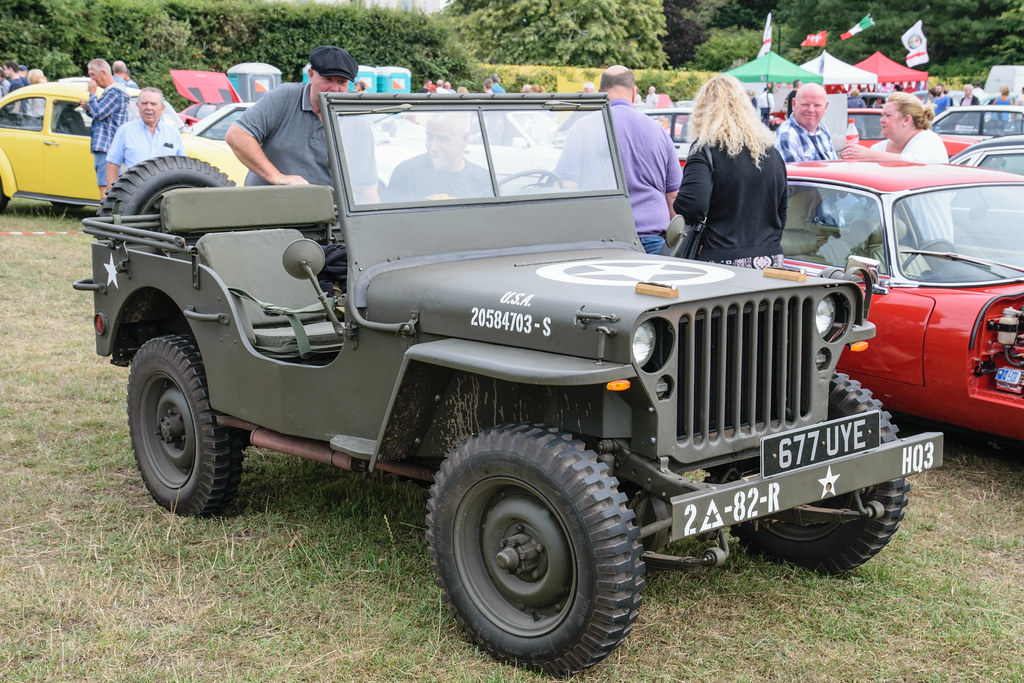
9. **Mass Production for a World at War: The Willys MB and Ford GPW**With the design standardized, the automotive industry shifted into overdrive, embarking on one of the most remarkable mass production feats in history. The Willys MB and Ford GPW, both formally known as the “U.S. Army truck, 1⁄4‑ton, 4×4, command reconnaissance,” rolled off assembly lines in unprecedented numbers. They quickly became universally known by their informal, yet enduring, names: the Willys Jeep, Jeep, or simply jeep.
The scale of this production was truly astounding. Well over 600,000 units were built to a single standardized design between 1941 and 1945 for the United States and its Allied forces. This incredible output not only underscored American industrial might but also marked a significant milestone: it made the Jeep the world’s first mass-produced four-wheel-drive car, achieving production numbers in the six figures.
These 1⁄4‑ton Jeeps rapidly became the primary light, wheeled, multi-role vehicle for the United States military and its allies, fulfilling countless essential functions on every front. With some 640,000 units built, these indispensable vehicles constituted a quarter of the total military support motor vehicles produced by the U.S. during the war. When combined with the Dodge WC series, they accounted for almost two-thirds of the 988,000 light 4WD vehicles manufactured, clearly dominating the light utility vehicle segment.
The global impact of the Jeep extended far beyond American forces. Large numbers were provided to U.S. allies under the Lend-Lease Act, playing a crucial role in bolstering their military capabilities. Notably, some 50,000 1⁄4‑ton Jeeps were shipped to aid the Soviet Union during World War II, providing vital mobility against Nazi Germany’s forces and significantly outnumbering their primary counterpart, the Kübelwagen, which saw just over 50,000 units produced in total.
Military equipment: Willys MB
Name: Willys MB , Ford GPW , Truck, 1⁄4nbhton, 4×4, command reconnaissance
Origin: United States
Type: 1/4 ton 4×4 utility truck
IsVehicle: true
Service: 1941–2000
UsedBy: allies of World War II
Wars: World War II,Korean War,List of wars: 1945–1989
Designer: Harold Crist
DesignDate: 1940 through early 1942
Manufacturer: Willys,Ford Motor Company
ProductionDate: 1941–1945
Number: WWII total: More than 647,925 *,,including early production units,Willys MB: Over 359,489 *,Ford GPW: Over 277,896 *,Auburn Automobile#Corporate history
Variants: Ford GPA
SpecLabel: MB and GPW same
Weight: convert
Length: 132 in
Abbr: refn
Width: 62 in
Height: 52 in
Crew: 3 to 4
PrimaryArmament: Designed to mount .30 or .50 caliber machine guns swiveling on a post between front seatbacks
Engine: 134 cuin
EnginePower: 60 hp
PwRatio: 49 hp
Transmission: 3-speed × 2-range transfer case
Suspension: Beam axle#Live axle vs Dead axle
Clearance: convert
PayloadCapacity: 1200 lb
FuelCapacity: 15 USgal
VehicleRange: 300 mi
Speed: 65 mph
Categories: All articles needing additional references, All articles with failed verification, All articles with unsourced statements, Articles needing additional references from September 2021, Articles with failed verification from September 2021
Summary: The Willys MB ( Willis) and the Ford GPW, both formally called the U.S. Army truck, 1⁄4‑ton, 4×4, command reconnaissance, commonly known as the Willys Jeep, Jeep, or jeep, and sometimes referred to by its Standard Army vehicle supply number G-503, were highly successful American off-road capable, light military utility vehicles. Well over 600,000 were built to a single standardized design, for the United States and the Allied forces in World War II, from 1941 until 1945. This also made it the world’s first mass-produced four-wheel-drive car, built in six-figure numbers.
The 1⁄4-ton jeep became the primary light, wheeled, multi-role vehicle of the United States military and its allies. With some 640,000 units built, the 1⁄4‑ton jeeps constituted a quarter of the total military support motor vehicles that the U.S. produced during the war, and almost two-thirds of the 988,000 light 4WD vehicles produced, when counted together with the Dodge WC series. Large numbers of jeeps were provided to U.S. allies, including the Soviet Union at the time. Aside from large amounts of 11⁄2- and 21⁄2‑ton trucks, and 25,000 3⁄4‑ton Dodges, some 50,000 1⁄4‑ton jeeps were shipped to help Russia during WWII, against Nazi Germany’s total production of just over 50,000 Kübelwagens, the jeep’s primary counterpart.
Historian Charles K. Hyde wrote: “In many respects, the jeep became the iconic vehicle of World War II, with an almost mythological reputation of toughness, durability, and versatility.” It became the workhorse of the American military, replacing horses, other draft animals, and motorcycles in every role, from messaging and cavalry units to supply trains. In addition, improvised field modifications made the jeep capable of just about any other function soldiers could think of. Military jeeps were adopted by countries all over the world, so much so that they became the most widely used and recognizable military vehicle in history.
Dwight D. Eisenhower, the Supreme Commander of the Allied Expeditionary Force in Europe in World War II, wrote in his memoirs that most senior officers regarded it as one of the five pieces of equipment most vital to success in Africa and Europe. General George Marshall, Chief of Staff of the US Army during the war, called the vehicle “America’s greatest contribution to modern warfare.” In 1991, the MB Jeep was designated an “International Historic Mechanical Engineering Landmark” by the American Society of Mechanical Engineers.
After WWII, the original jeep continued to serve, in the Korean War and other conflicts, until it was updated in the form of the M38 Willys MC and M38A1 Willys MD (in 1949 and 1952 respectively), and received a complete redesign by Ford in the form of the 1960-introduced M151 jeep. Its influence, however, was much greater than that—manufacturers worldwide began building jeeps and similar designs, either under license or not—at first primarily for military purposes, but later also for the civilian market. Willys turned the MB into the civilian Jeep CJ-2A in 1945, making the world’s first mass-produced civilian four-wheel drive. The “Jeep” name was trademarked and grew into a successful and highly valued brand.
The success of the jeep inspired both an entire category of recreational 4WDs and SUVs, making “four-wheel drive” a household term, and numerous incarnations of military light utility vehicles. In 2010, the American Enterprise Institute called the jeep “one of the most influential designs in automotive history.” Its “sardine tin on wheels” silhouette and slotted grille made it instantly recognizable, and it has evolved into the currently produced Jeep Wrangler still largely resembling the original jeep design.
Get more information about: Willys MB
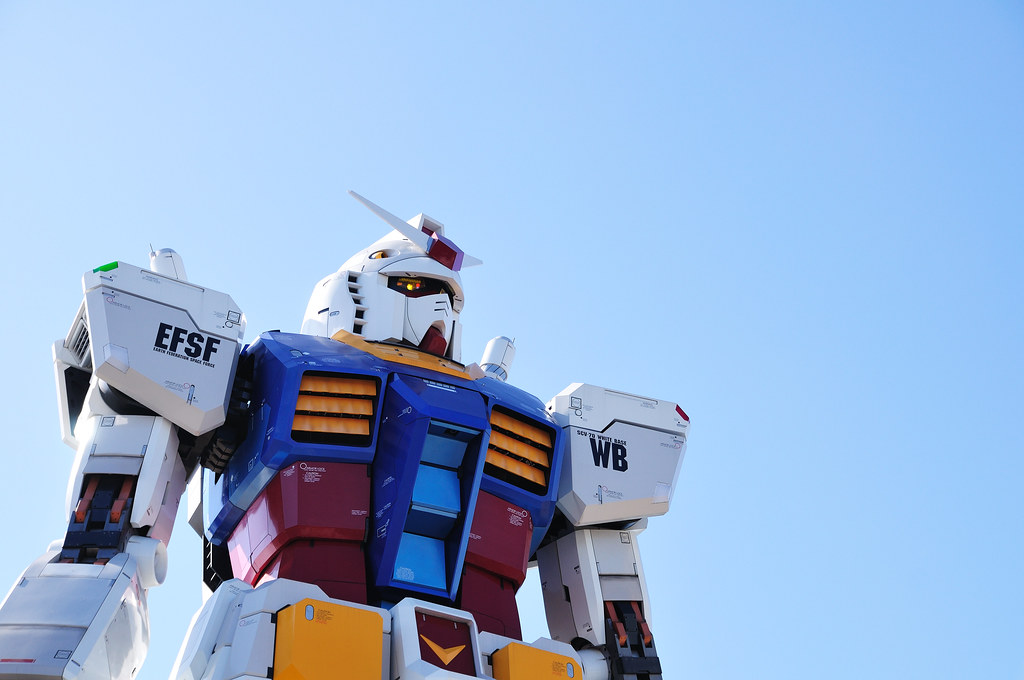
10. **The Battlefield Icon: Versatility and Impact on the Frontlines**On the battlefields of World War II, the Jeep quickly forged an “almost mythological reputation of toughness, durability, and versatility.” It was far more than just a vehicle; it was an indispensable workhorse that fundamentally transformed military logistics and operations. Across every theater, it replaced horses, other draft animals, and even motorcycles in nearly every conceivable role, proving its worth in the harshest conditions.
Its unparalleled utility earned the admiration and praise of the highest-ranking military leaders. General Dwight D. Eisenhower, the Supreme Commander of the Allied Expeditionary Force, famously regarded the Jeep as “one of the six most vital” U.S. vehicles essential for success in Africa and Europe. General George Marshall, Chief of Staff of the U.S. Army during the war, echoed this sentiment, hailing the vehicle as “America’s greatest contribution to modern warfare.”
One of the most remarkable aspects of the Jeep was its adaptability. Soldiers quickly discovered that its robust, straightforward design lent itself to an astonishing array of “improvised field modifications.” From mounting machine guns and radios to serving as makeshift ambulances or even railway inspection cars, the Jeep became capable of “just about any other function soldiers could think of,” a true testament to its flexible engineering and the ingenuity of its operators.
This combination of rugged performance, strategic importance, and incredible versatility cemented the Jeep’s place in history. Adopted by countries across the globe, it became the most widely used and recognizable military vehicle ever, an enduring symbol of Allied determination. The iconic “Flying Jeep” photos, showing the vehicle loaded with crew and towing artillery in mid-air, inspired propaganda posters and captured the public’s imagination, underscoring its legendary capabilities.
Military equipment: Mobile Suit Gundam: Hathaway
Cinematography: Kenta Hayashi
Name: Mobile Suit Gundam: Hathaway
Caption: Theatrical release poster
NativeName: 機動戦士ガンダム 閃光のハサウェイ,Kidō Senshi Gandamu: Senkō no Hasauei
Director: Shūkō Murase
Producer: Naohiro Ogata
Screenplay: Interlanguage link
BasedOn: Based on
Starring: Kensho Ono,Reina Ueda,Junichi Suwabe,Soma Saito,Tōru Furuya
Music: Hiroyuki Sawano
Editing: Daisuke Imai
Studio: Sunrise (studio)
Distributor: Shochiku
Released: [object Object]
Runtime: 95 minutes
Gross: ¥2.23 billion (Japan)
Country: Japan
Language: Japanese
Categories: 2021 anime films, 2021 films, Animated films about robots, Animated films based on novels, Anime films with original screenplays
Summary: Mobile Suit Gundam: Hathaway (機動戦士ガンダム 閃光のハサウェイ, Kidō Senshi Gandamu: Senkō no Hasauei; lit. ’Mobile Suit Gundam: Hathaway’s Flash’) is a Japanese science fiction animated film and the first part of a planned trilogy in the Gundam franchise. Adapted from the 1989–1990 novel of the same name by Yoshiyuki Tomino, it is directed by Shuko Murase, written by Yasuyuki Muto, scored by Hiroyuki Sawano, and animated by Sunrise.
Planned as the first of a trilogy, the film was originally set for release on July 23, 2020, but was delayed to May 2021 due to the COVID-19 pandemic in Japan, and later to June 11, 2021, due to extended emergency declarations. It screened at the 24th Shanghai International Film Festival on the same day and was later streamed on platforms like Bilibili in China and Netflix globally in July.
Set in the Universal Century timeline after Mobile Suit Gundam: Char’s Counterattack, the story follows Hathaway Noa, who, inspired by Amuro Ray and Char Aznable, leads the anti-Earth Federation group Mafty to resist the Federation’s deepening corruption. His encounters with Federation officer Kenneth Sleg and the mysterious Gigi Andalusia profoundly impact their lives.
The film received widespread praise for its stunning visuals and meticulous production, though some criticized overly dark scenes and compressed storytelling. It grossed ¥2.23 billion, ranking 14th among Japanese films in 2021.
Get more information about: Mobile Suit Gundam: Hathaway
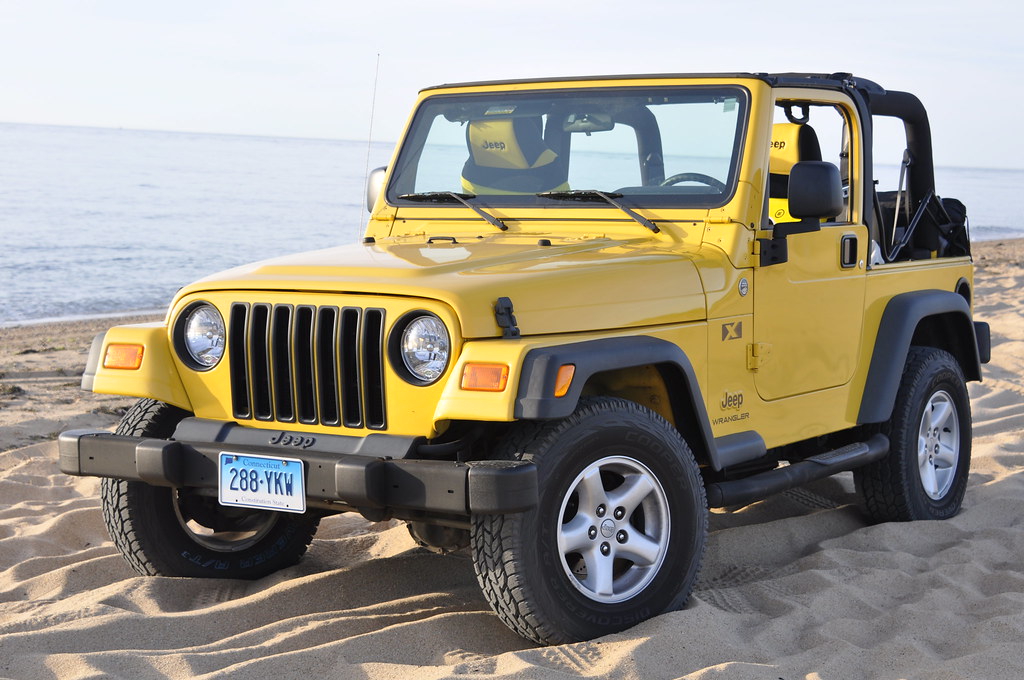
11. **Evolution and Endurance: The Jeep Beyond WWII**The end of World War II did not signal the end of the original Jeep’s service. Its robust design and proven reliability ensured its continued deployment in subsequent conflicts, including the Korean War, where it once again demonstrated its indispensable value on challenging battlefields. This testament to its fundamental soundness allowed the original wartime design to serve for many years.
Over time, the military version of the Jeep underwent necessary updates to meet evolving operational demands. The M38 Willys MC, introduced in 1949, and the M38A1 Willys MD, following in 1952, represented significant evolutions of the design, incorporating improvements to maintain its effectiveness. Later, Ford introduced a complete redesign in the form of the M151 Jeep in 1960, ensuring the legacy of the light utility vehicle continued for decades.
Perhaps one of the most significant transformations for the Jeep came with its pivotal transition to the civilian market. Recognizing the immense potential of its rugged, four-wheel-drive capabilities beyond military applications, Willys successfully adapted the MB into the civilian Jeep CJ-2A in 1945. This move was groundbreaking, effectively making it the world’s first mass-produced civilian four-wheel drive vehicle and opening up an entirely new market segment.
The Jeep’s profound engineering and historical significance were formally recognized in 1991 when the American Society of Mechanical Engineers designated the MB Jeep as an “International Historic Mechanical Engineering Landmark.” This prestigious honor underscored its lasting impact on automotive design and its role as a pivotal engineering achievement, transcending its wartime origins.
Military equipment: Warship
Categories: All articles needing additional references, All articles with unsourced statements, Articles needing additional references from August 2016, Articles with short description, Articles with unsourced statements from July 2022
Summary: A warship or combatant ship is a naval ship that is used for naval warfare. Usually they belong to the navy branch of the armed forces of a nation, though they have also been operated by individuals, cooperatives and corporations. As well as being armed, warships are designed to withstand damage and are typically faster and more maneuverable than merchant ships. Unlike a merchant ship, which carries cargo, a warship typically carries only weapons, ammunition and supplies for its crew.
In wartime, the distinction between warships and merchant ships is often blurred. Until the 17th century it was common for merchant ships to be pressed into naval service, and not unusual for more than half of a fleet to be composed of merchant ships—there was not a large difference in construction, unlike the difference between a heavily armoured battleship and an ocean liner. Until the threat of piracy subsided in the 19th century, it was normal practice to arm larger merchant ships such as galleons. Warships have also often been used as troop carriers or supply ships, such as by the French Navy in the 18th century or the Imperial Japanese Navy during the Second World War. In war since the early 20th century, merchant ships were often armed and used as auxiliary warships, such as the Q-ships of the First World War and the armed merchant cruisers of the Second World War.
Get more information about: Warship
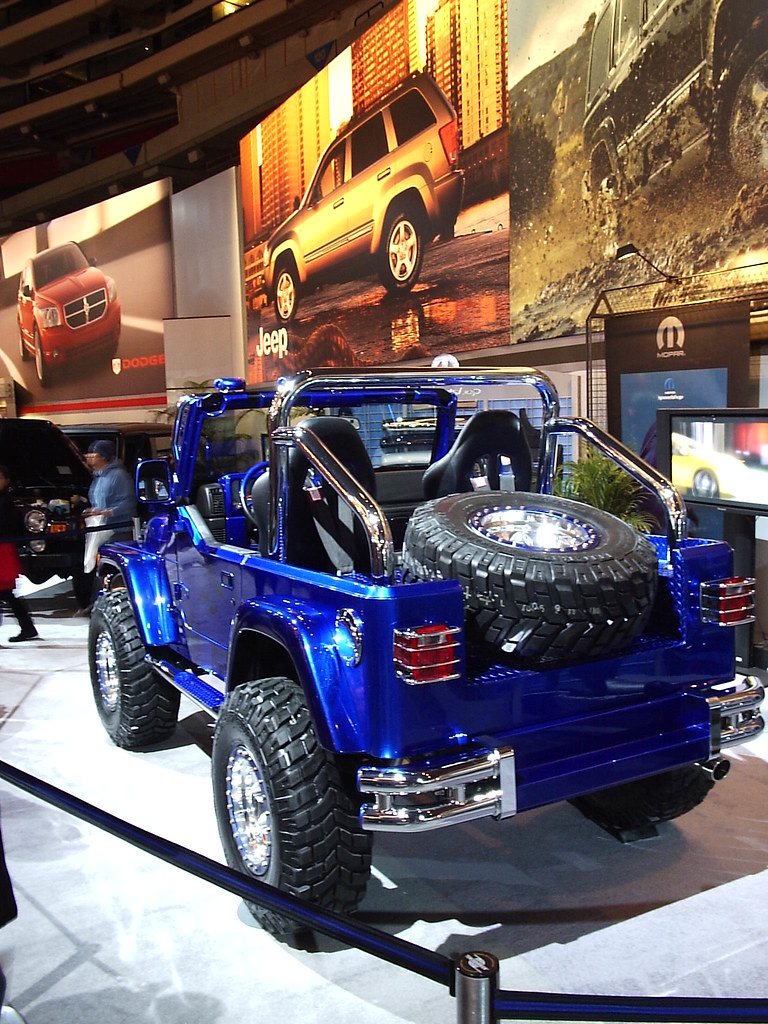
12. **The Enduring Legacy: Trademark, Influence, and the Wrangler**The story of the Jeep’s name itself is as intricate as its development. When Willys-Overland first sought to trademark “Jeep” in February 1943, it sparked significant objections from both Bantam and Ford, who rightfully pointed to their substantial contributions to the vehicle and the collective war effort. This led to a contentious dispute over who truly deserved credit for the iconic name and design.
The U.S. Federal Trade Commission (FTC) took up the matter, opening a case in May 1943 against Willys-Overland for alleged misrepresentation in their advertising. After a thorough investigation, the FTC ruled in 1943, and again in 1948 after Willys’ appeal, that Willys did not achieve the “spectacular achievement” of solely creating the Jeep. Instead, the FTC definitively stated that “The idea of creating a ‘jeep’ was said by the FTC … to have been originated by the American Bantam [Co.] of Butler, PA ‘[with U.S. Army officers] and to have been [conceived and] developed by that company.”
This historical acknowledgment of Bantam’s foundational role continues to resonate. In 2015, the Pennsylvania General Assembly unanimously adopted a resolution explicitly commemorating the 75th anniversary of the Bantam Jeep, recognizing Bantam of Butler, PA, as the inventor. This resolution further detailed how Bantam delivered the only working prototype within the required seven weeks and manufactured 2,675 Jeeps before production scaled to Willys and Ford due to capacity concerns, with the Army sharing Bantam’s blueprints.
Despite the origin disputes, the Jeep’s broader influence on the automotive world is undeniable. Its success inspired an entire category of recreational 4WDs and SUVs, transforming “four-wheel drive” from a military necessity into a household term and a desirable feature for adventurers worldwide. The Jeep’s distinctive “sardine tin on wheels” silhouette and slotted grille became instantly recognizable, evolving into the currently produced Jeep Wrangler, which still largely retains the spirit and design cues of its legendary wartime ancestor.
Military equipment: Scotty Moore
BirthName: Winfield Scott Moore III
BirthDate: [object Object]
BirthPlace: Gadsden, Tennessee
DeathDate: [object Object]
DeathPlace: Nashville, Tennessee
Genre: Rock and roll,rockabilly,country music
Occupation: Musician
Instrument: Guitar
YearsActive: 1950s–2009
PastMemberOf: The Blue Moon Boys
Label: Sun Records,RCA Victor
Website: scottymoore.net
Caption: Moore in 2000
Categories: 1931 births, 2016 deaths, 20th-century American guitarists, 20th-century American male musicians, All articles with unsourced statements
Summary: Winfield Scott Moore III (December 27, 1931 – June 28, 2016) was an American guitarist who formed the Blue Moon Boys in 1954, Elvis Presley’s backing band. He was studio and touring guitarist for Presley between 1954 and 1968.
Rock critic Dave Marsh credits Moore with inventing power chords, on the 1957 Elvis hit “Jailhouse Rock”. Moore was ranked 29th in Rolling Stone magazine’s list of 100 Greatest Guitarists of All Time in 2011. He was inducted into the Rock and Roll Hall of Fame in 2000, the Musicians Hall of Fame and Museum in 2007, and the Memphis Music Hall of Fame in 2015. The Rolling Stones’ guitarist Keith Richards said of Moore:When I heard “Heartbreak Hotel”, I knew what I wanted to do in life. It was as plain as day. All I wanted to do in the world was to be able to play and sound like the way Scotty Moore did. Everyone wanted to be Elvis, I wanted to be Scotty.
Get more information about: Scotty Moore
The Jeep is more than just a vehicle; it’s a testament to ingenuity under pressure, a symbol of collaboration, and an enduring icon that has shaped both military history and the global automotive landscape. Its legacy continues to inspire, reminding us of the powerful impact a single, well-designed machine can have on the course of history and the imagination of generations.


